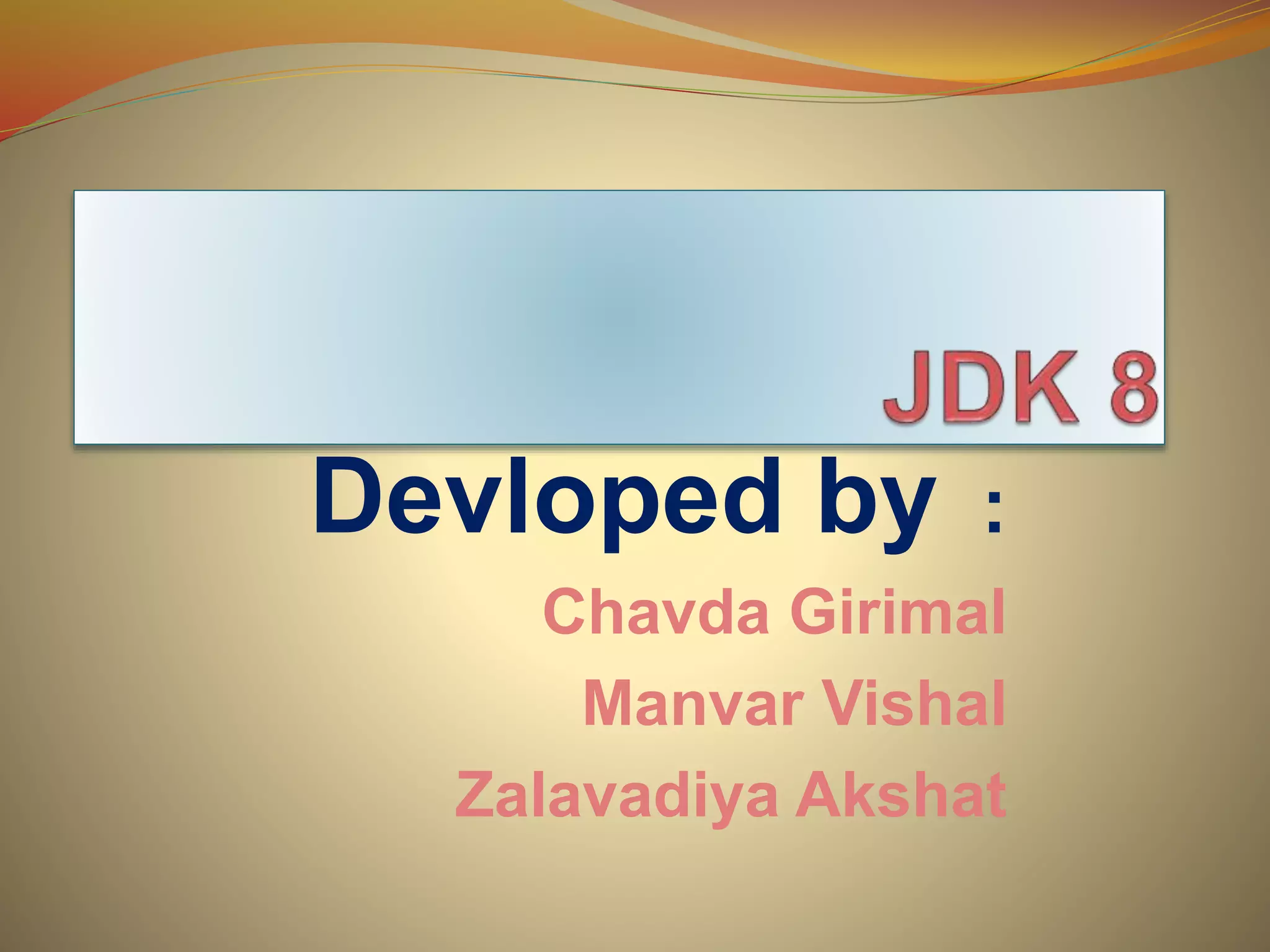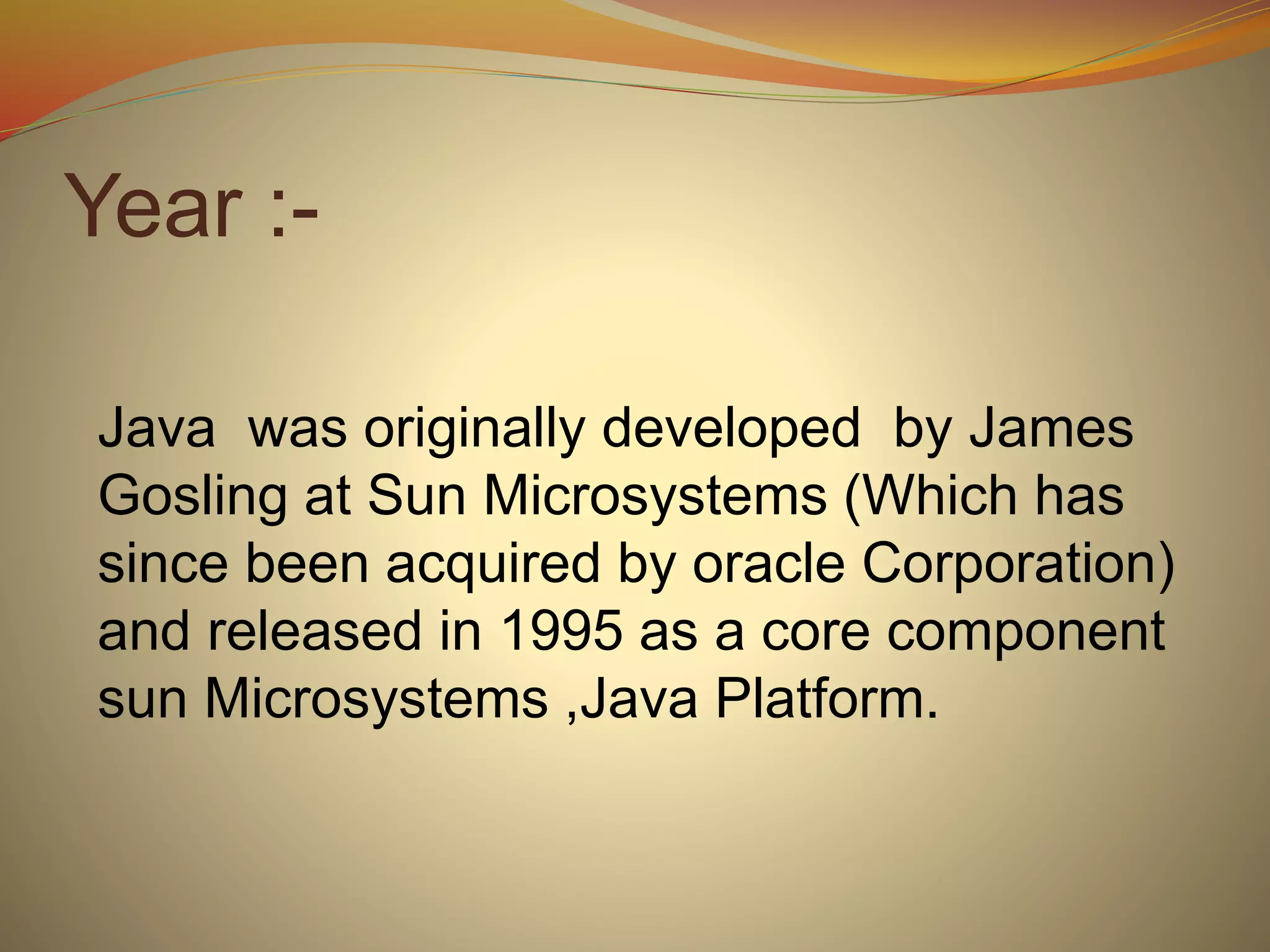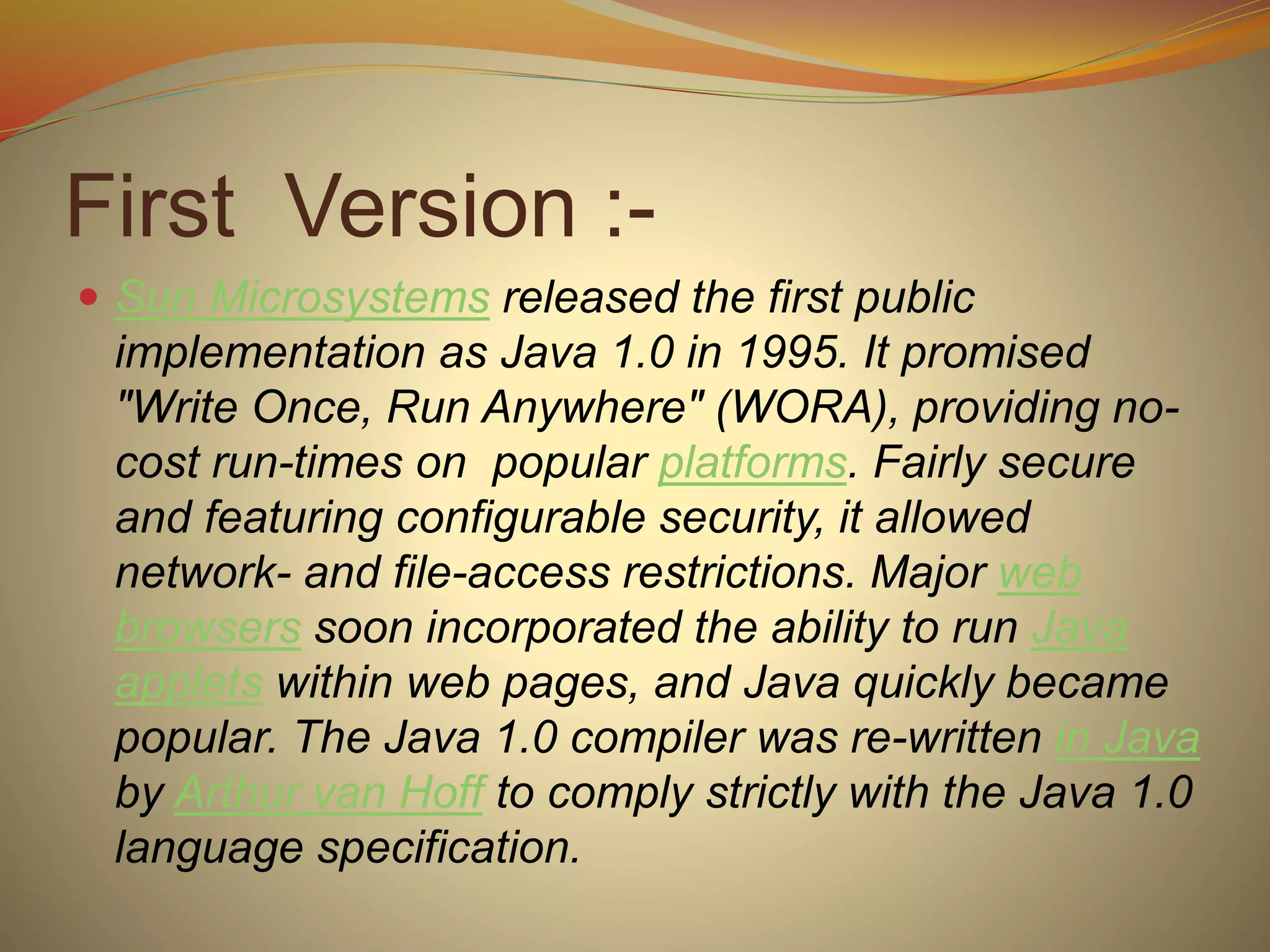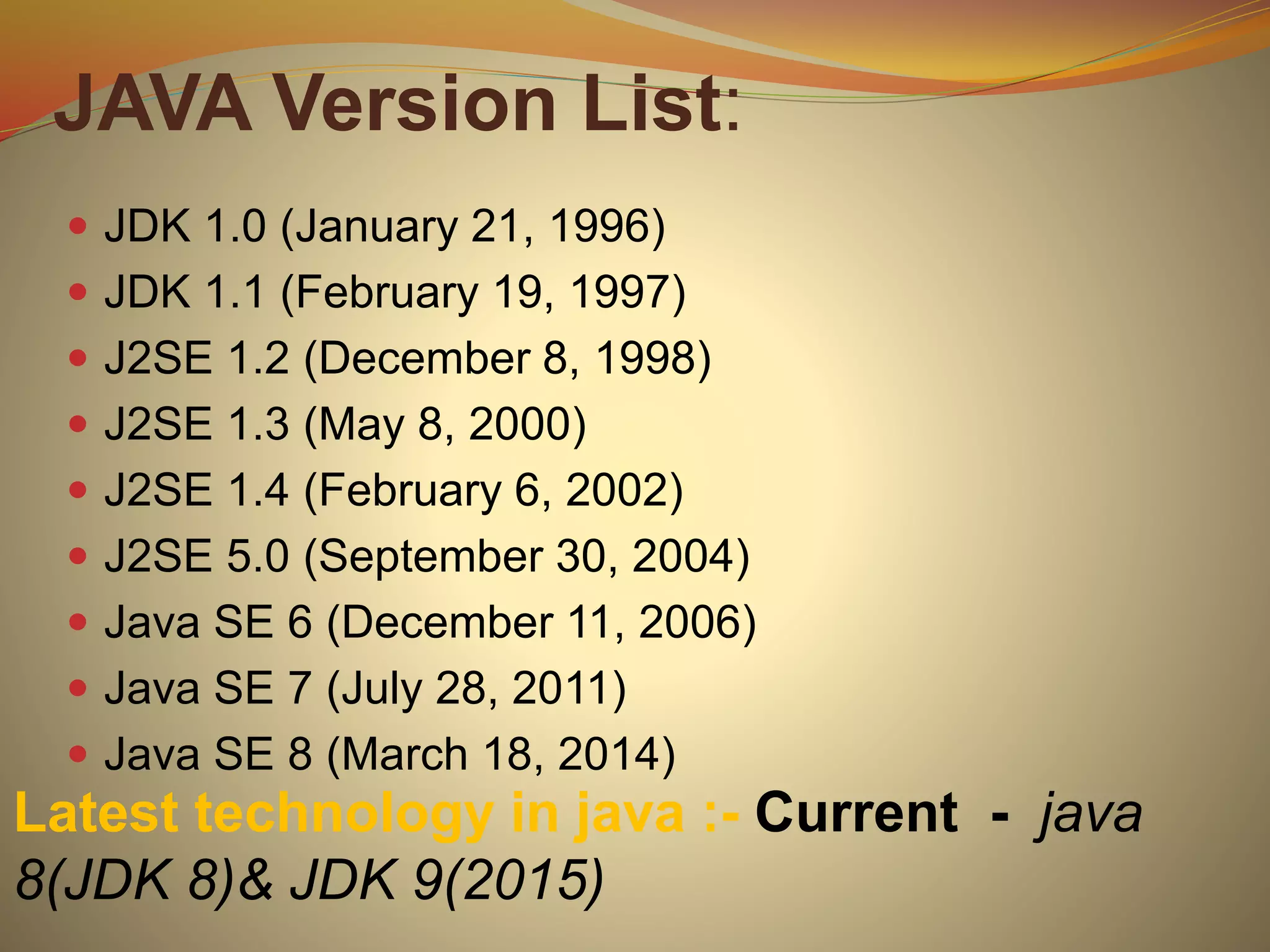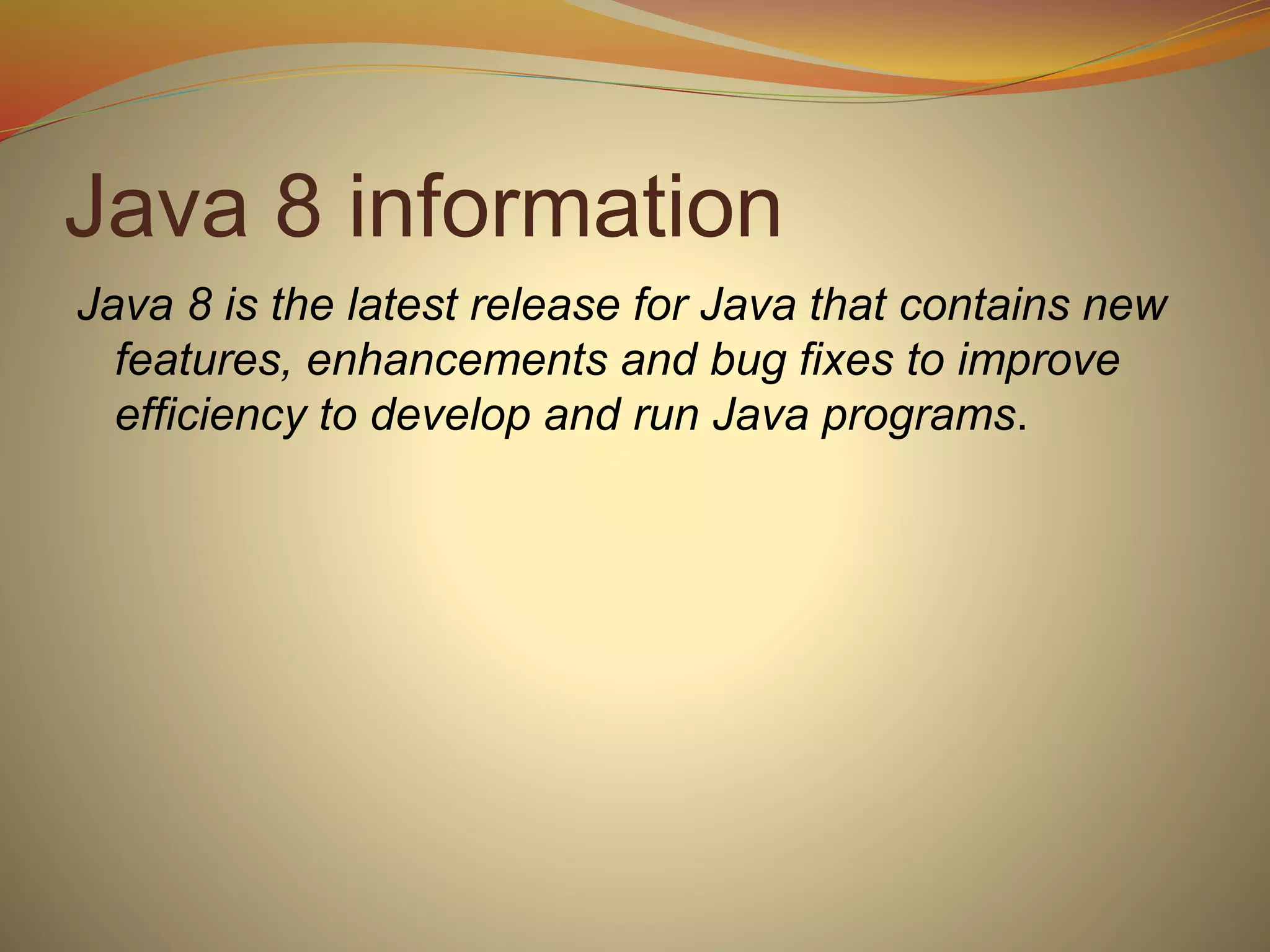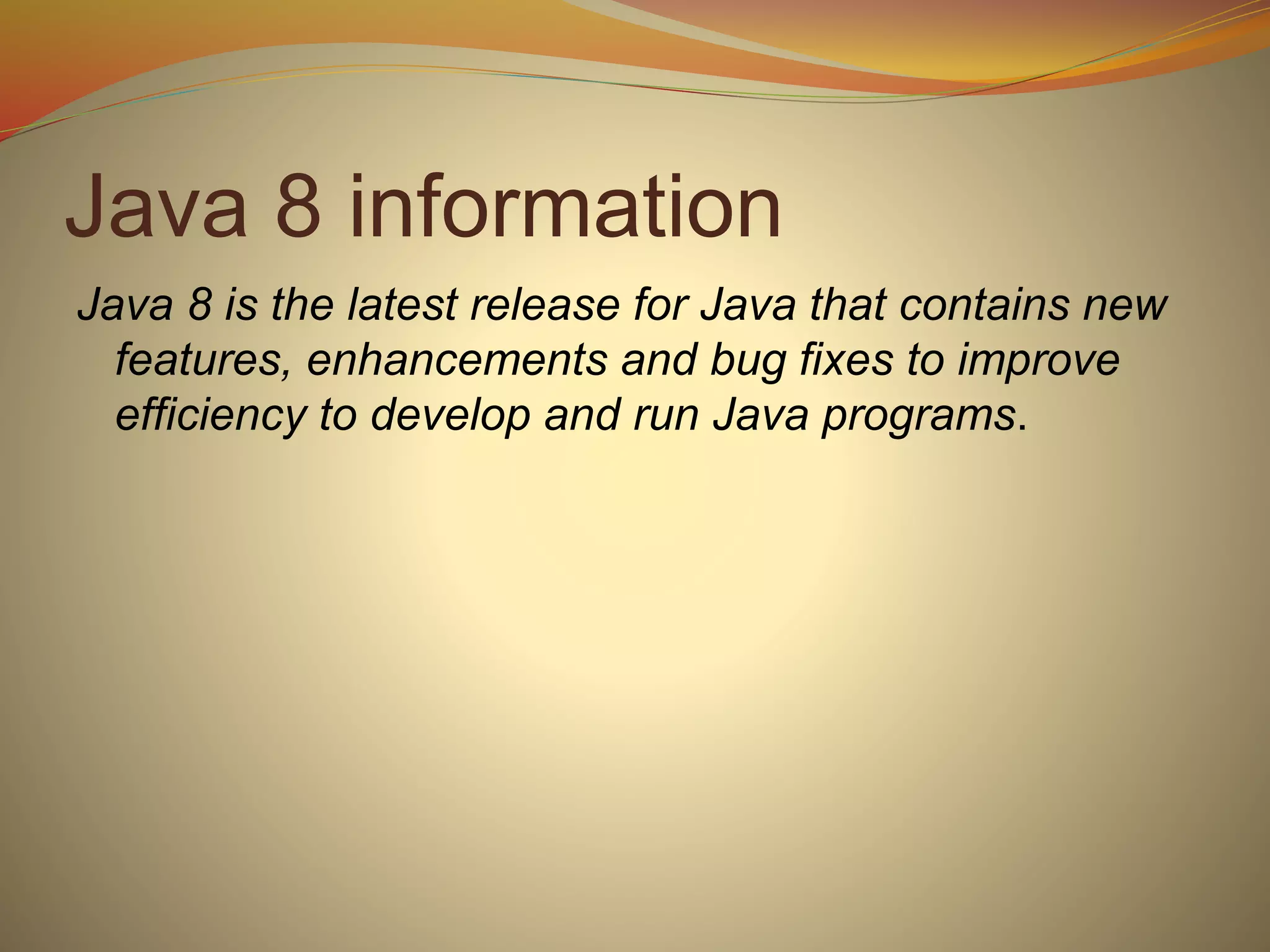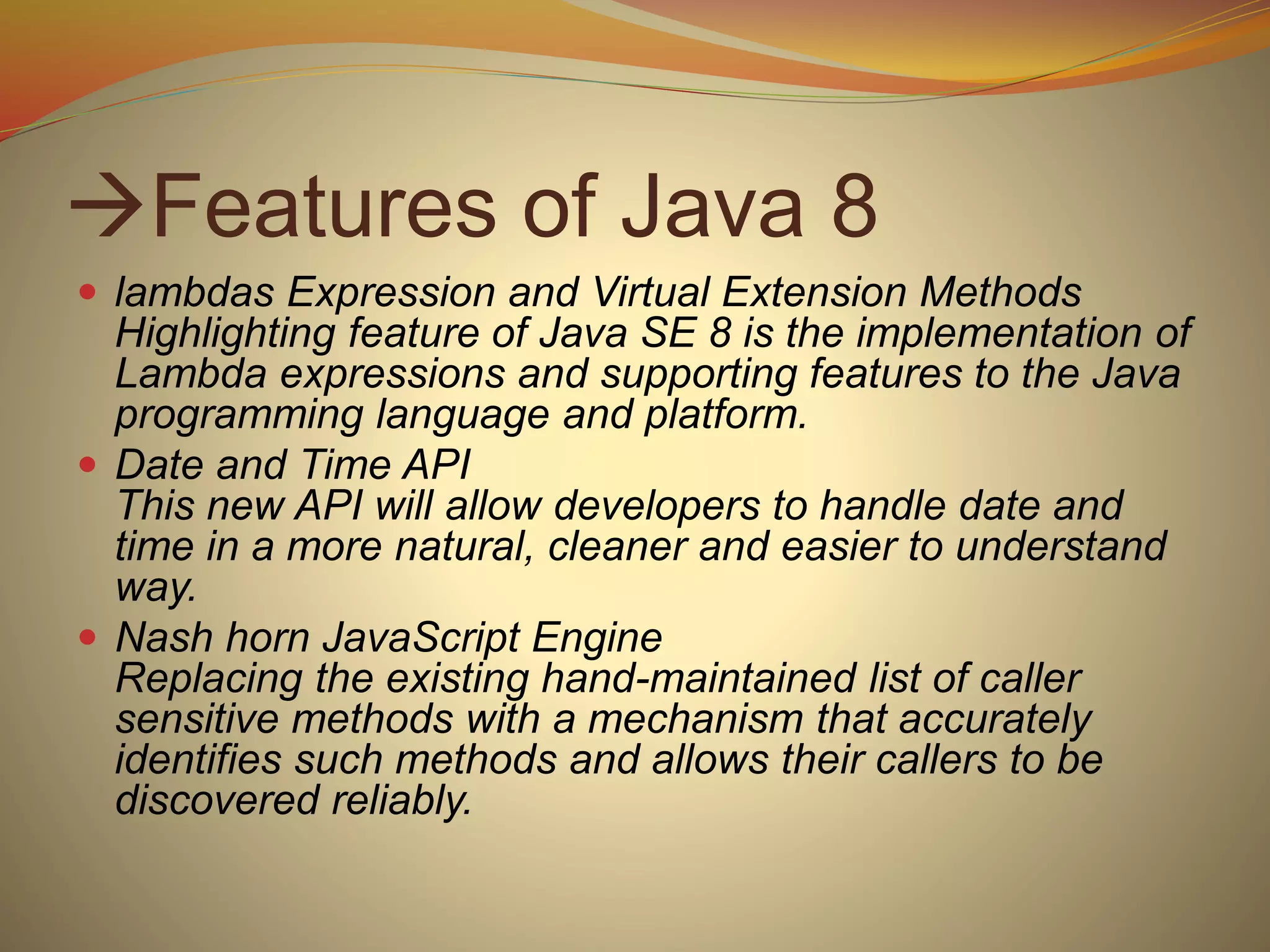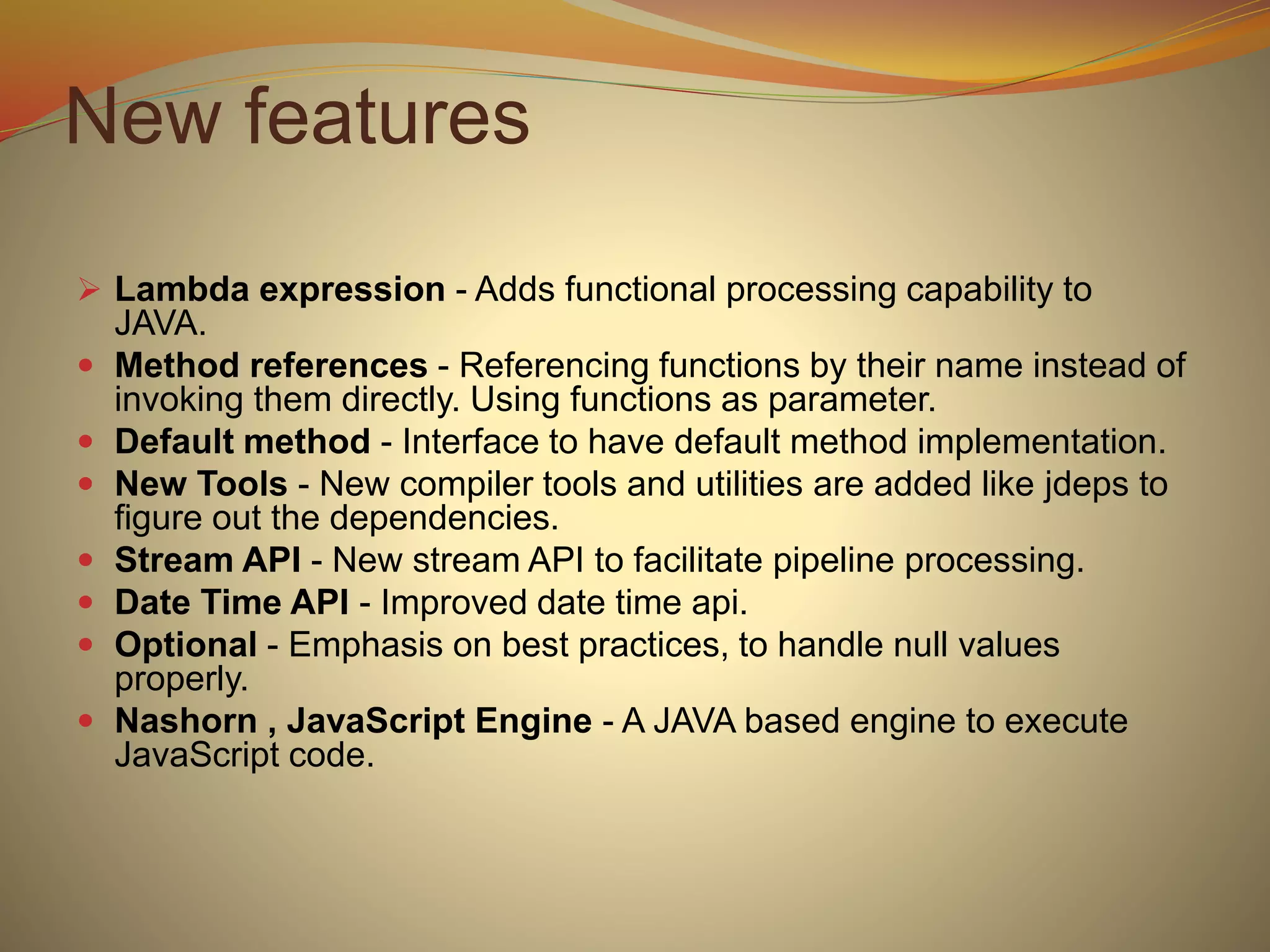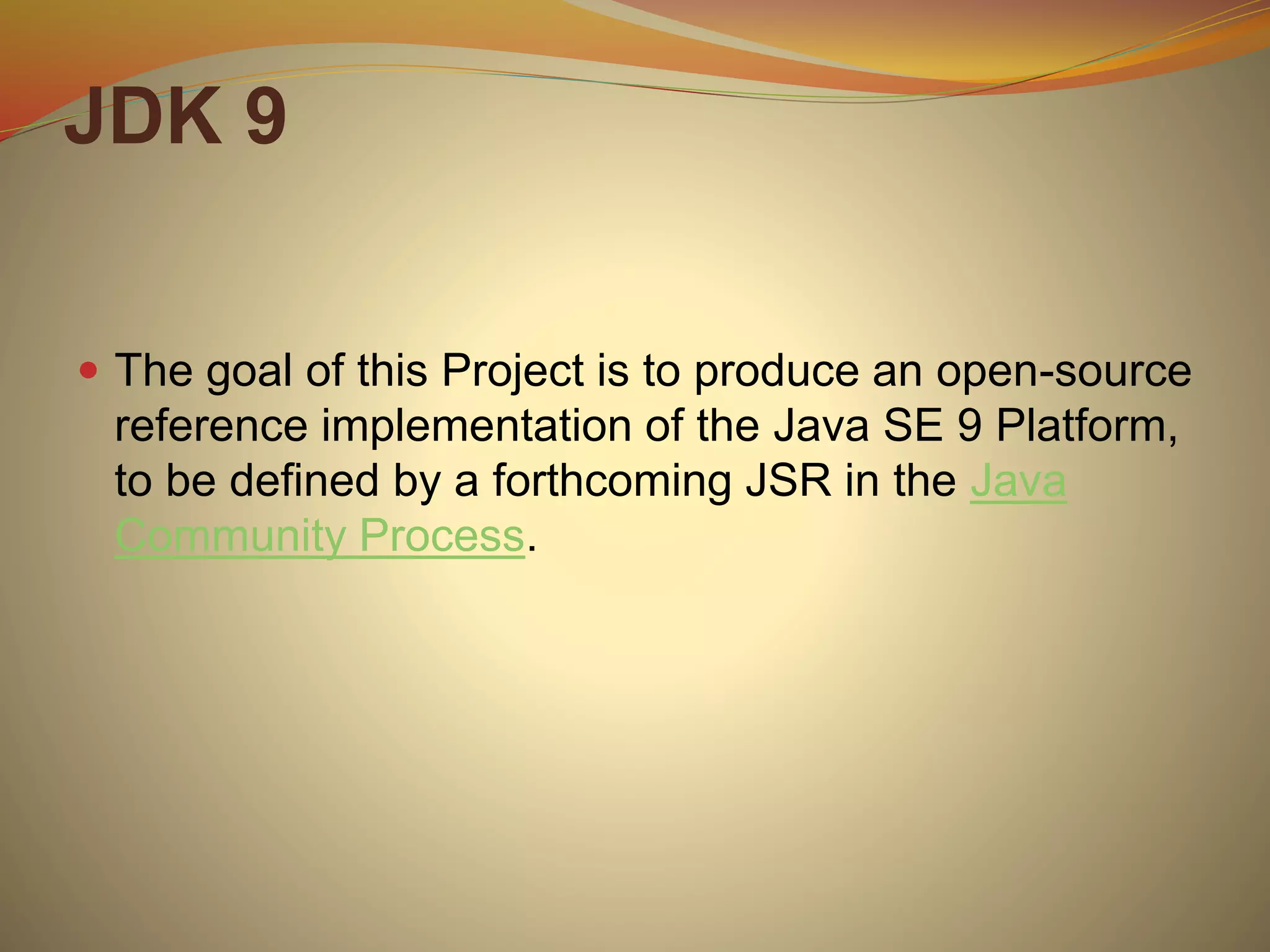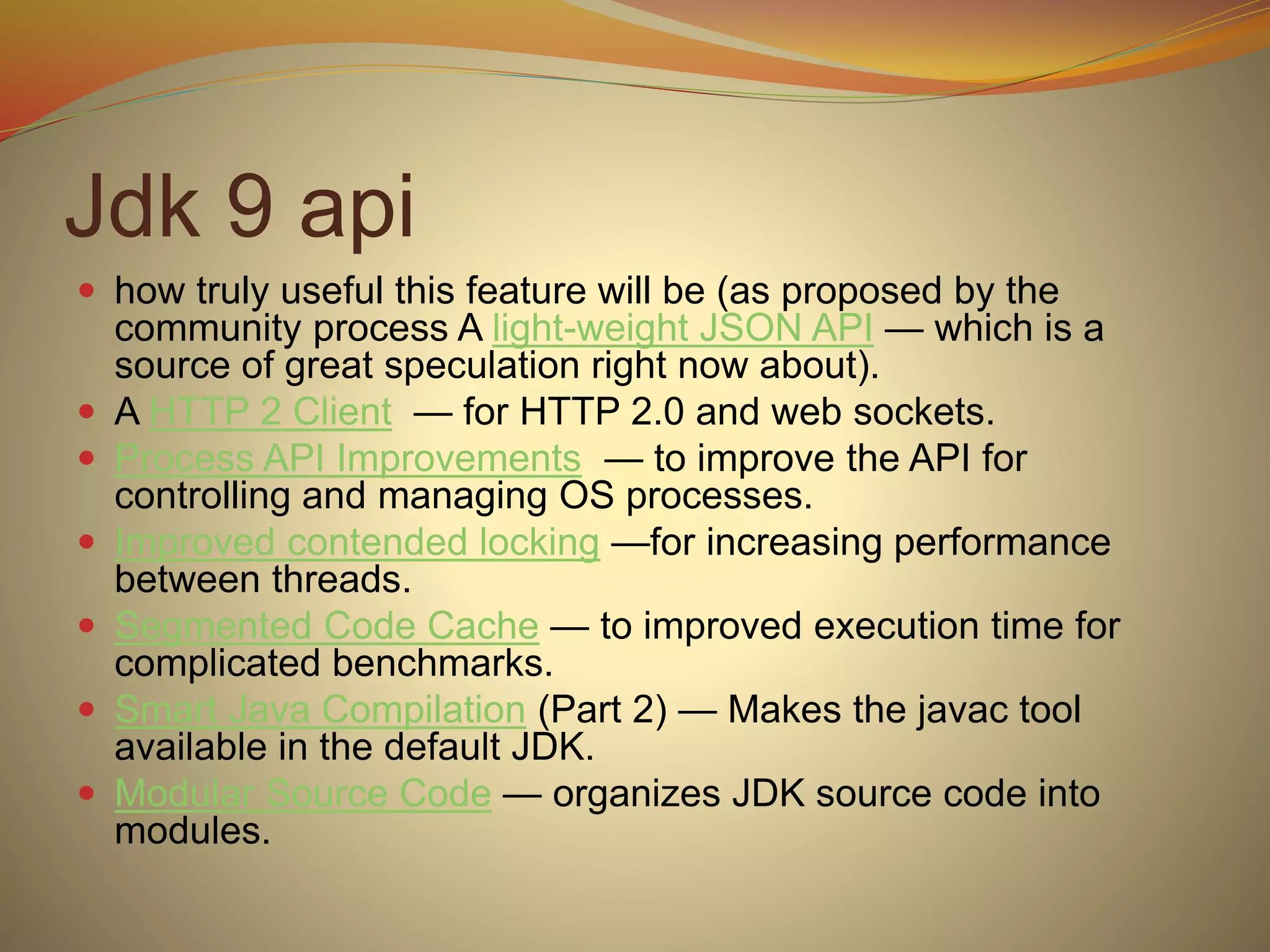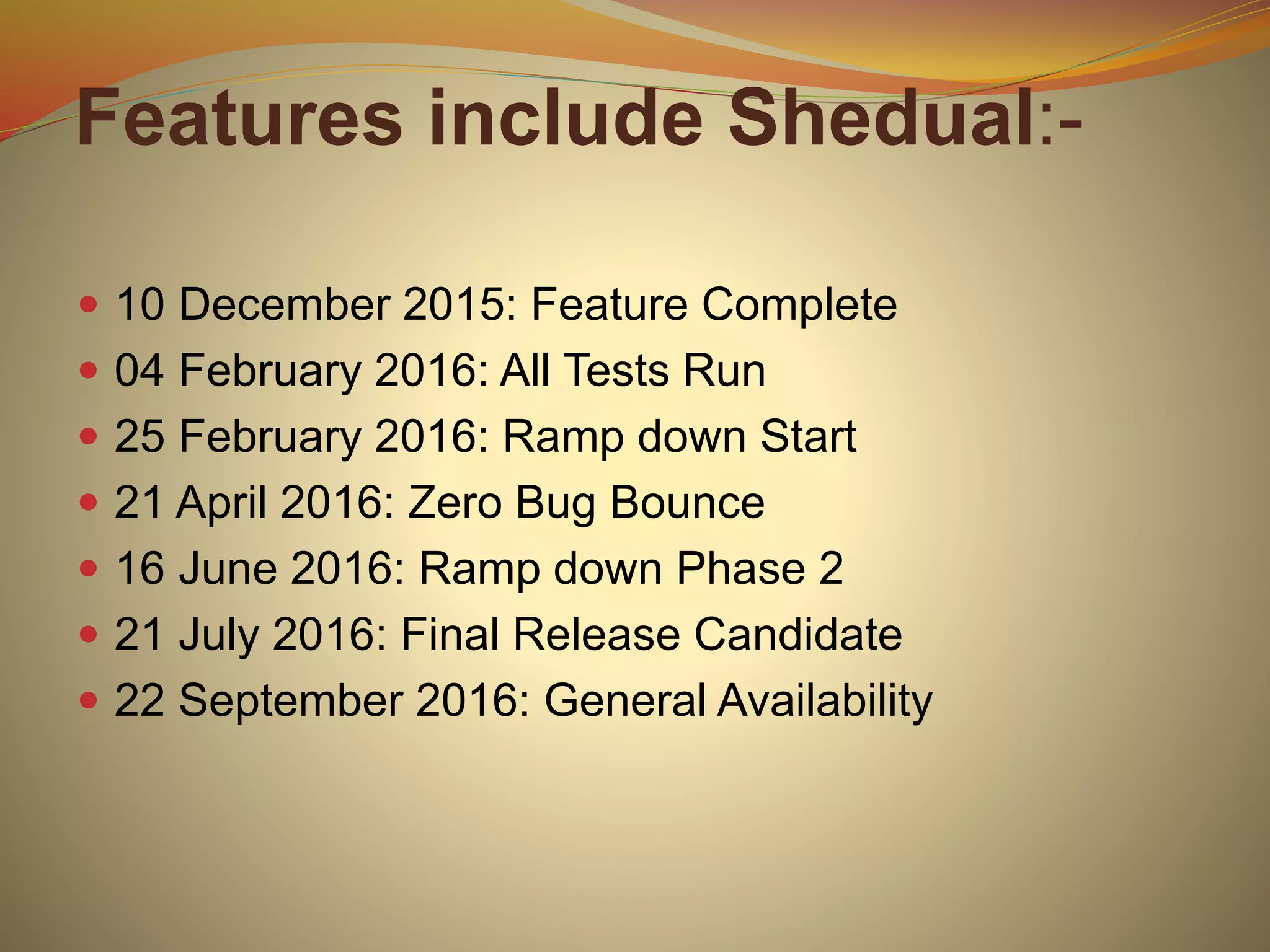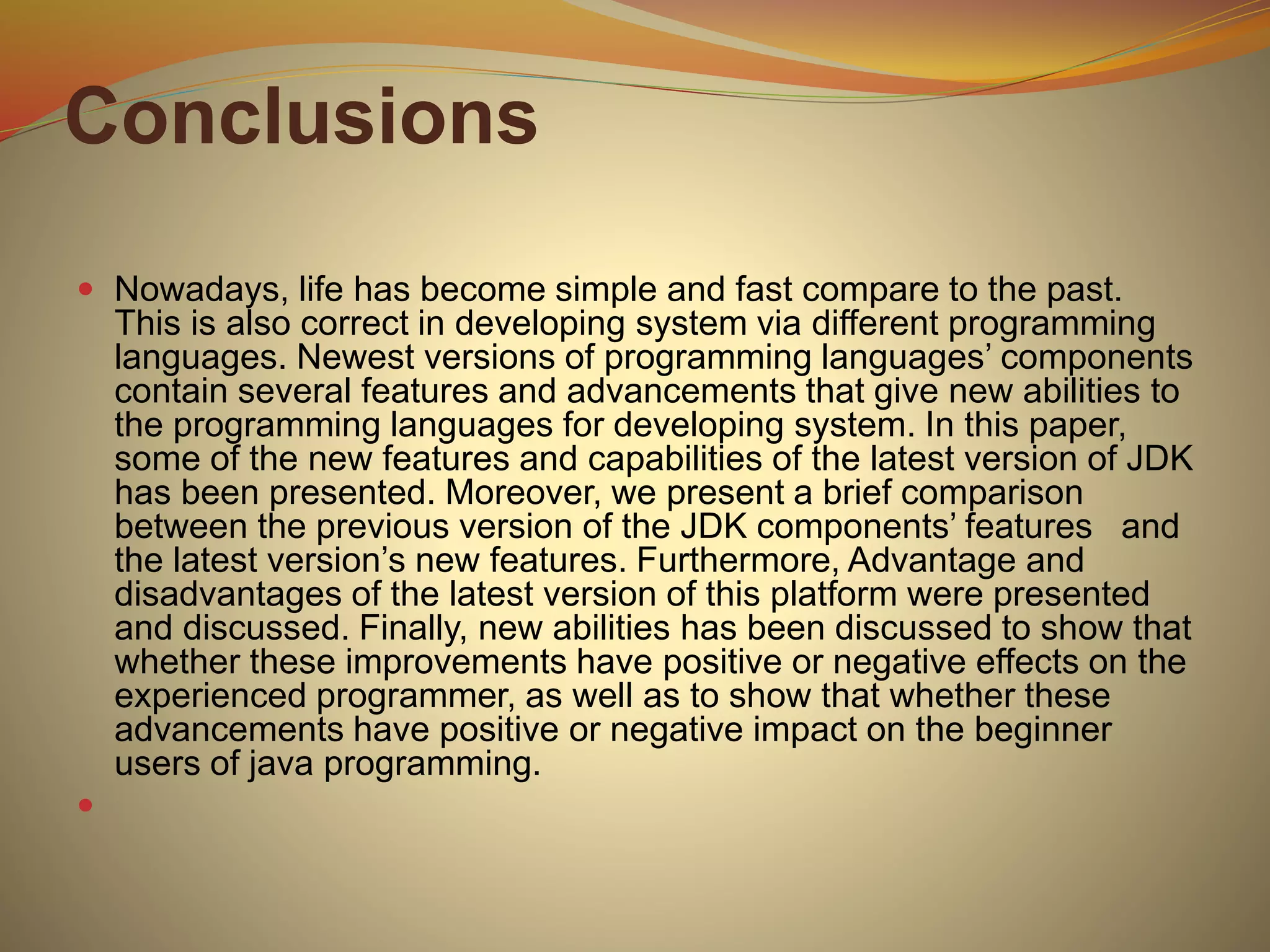Java was originally developed by James Gosling at Sun Microsystems in 1995 and released as a core component of Sun's Java platform. Some key updates and features of newer Java versions include lambda expressions and streams in Java 8, which improved efficiency. Java 9 added a lightweight JSON API and HTTP/2 client, while Java updates focused on performance improvements and modularizing the JDK source code. The latest versions of Java aimed to simplify development through new language features and tools while maintaining security and portability across platforms.
